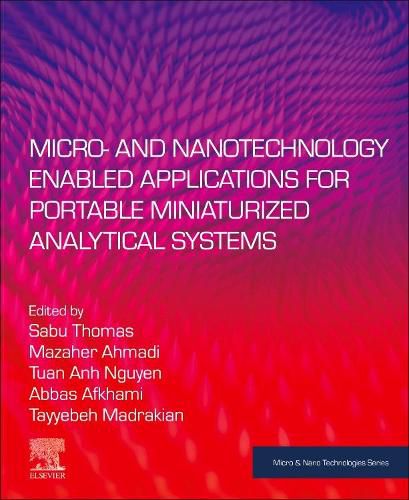Readings Newsletter
Become a Readings Member to make your shopping experience even easier.
Sign in or sign up for free!
You’re not far away from qualifying for FREE standard shipping within Australia
You’ve qualified for FREE standard shipping within Australia
The cart is loading…






Micro- and Nanotechnology Enabled Applications for Portable Miniaturized Analytical Systems outlines the basic principles of miniaturized analytical devices, such as spectrometric, separation, imaging and electrochemical miniaturized instruments. Concepts such as smartphone-enabled miniaturized detection systems and micro/nanomachines are also reviewed. Subsequent chapters explore the emerging application of these mobile devices for miniaturized analysis in various fields, including medicine and biomedicine, environmental chemistry, food chemistry, and forensic chemistry. This is an important reference source for materials scientists and engineers wanting to understand how miniaturization techniques are being used to create a range of efficient, sustainable electronic and optical devices.
Miniaturization describes the concept of manufacturing increasingly smaller mechanical, optical, and electronic products and devices. These smaller instruments can be used to produce micro- and nanoscale components required for analytical procedures. A variety of micro/nanoscale materials have been synthesized and used in analytical procedures, such as sensing materials, sorbents, adsorbents, catalysts, and reactors. The miniaturization of analytical instruments can be applied to the different steps of analytical procedures, such as sample preparation, analytical separation, and detection, reducing the total cost of manufacturing the instruments and the needed reagents and organic solvents.
$9.00 standard shipping within Australia
FREE standard shipping within Australia for orders over $100.00
Express & International shipping calculated at checkout
Micro- and Nanotechnology Enabled Applications for Portable Miniaturized Analytical Systems outlines the basic principles of miniaturized analytical devices, such as spectrometric, separation, imaging and electrochemical miniaturized instruments. Concepts such as smartphone-enabled miniaturized detection systems and micro/nanomachines are also reviewed. Subsequent chapters explore the emerging application of these mobile devices for miniaturized analysis in various fields, including medicine and biomedicine, environmental chemistry, food chemistry, and forensic chemistry. This is an important reference source for materials scientists and engineers wanting to understand how miniaturization techniques are being used to create a range of efficient, sustainable electronic and optical devices.
Miniaturization describes the concept of manufacturing increasingly smaller mechanical, optical, and electronic products and devices. These smaller instruments can be used to produce micro- and nanoscale components required for analytical procedures. A variety of micro/nanoscale materials have been synthesized and used in analytical procedures, such as sensing materials, sorbents, adsorbents, catalysts, and reactors. The miniaturization of analytical instruments can be applied to the different steps of analytical procedures, such as sample preparation, analytical separation, and detection, reducing the total cost of manufacturing the instruments and the needed reagents and organic solvents.